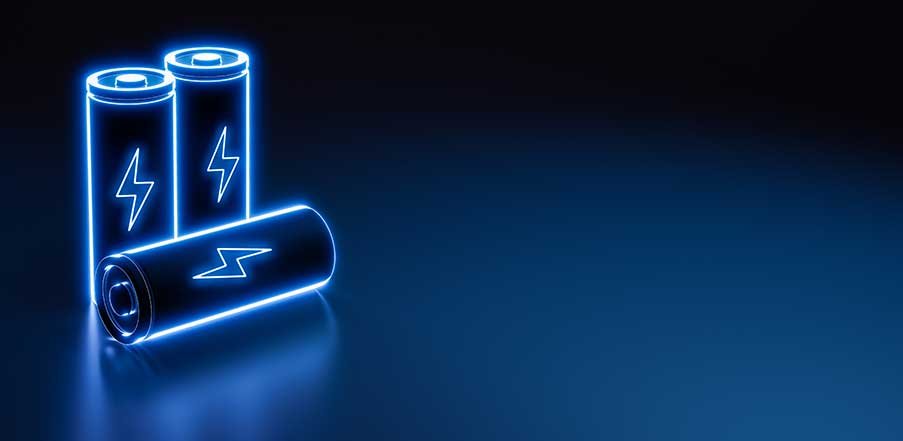World News01.06.2023
Japan researchers develop calcium rechargeable battery with long cycle life

QAZAQ GREEN. Researchers at Tohoku University in Japan have developed a prototype calcium battery with a long cycle life of more than 500 charge-discharge cycles. The battery was developed using a hydride-based electrolyte and copper sulfide nanoparticle/carbon composite cathode, the university said.
The breakthrough was reported in the journal Advanced Science on May 19, 2023.
With the use of electric vehicles and grid-scale energy storage systems on the rise, the need to explore alternatives to lithium-ion batteries (LIBs) has never been greater. One such replacement is Ca metal batteries. As the fifth most abundant element in earth's crust, calcium is widely available and inexpensive, and has higher energy density potential than LIBs. Its properties are also thought to help accelerate ion transport and diffusion in electrolytes and cathode materials, giving it an edge over other LIB-alternatives such as magnesium and zinc.
But many hurdles remain in the way of Ca metal batteries' commercial viability. The lack of an efficient electrolyte and the absence of cathode materials with sufficient Ca2+ storage capabilities have proved to be the main stumbling blocks.
Back in 2021, some members of the current research group provided a solution to the former problem when they realized a new fluorine-free calcium (Ca) electrolyte based on a hydrogen (monocarborane) cluster. The electrolyte demonstrated markedly improved electrochemical performances such as high conductivity and high electrochemical stabilities.
«For our current research, we tested the long-term operation of a Ca metal battery with a copper sulfide (CuS) nanoparticle/carbon composite cathode and a hydride-based electrolyte,» says Kazuaki Kisu, assistant professor at Tohoku University's Institute for Materials Research (IMR).Schematic of a prototype Ca metal battery. The battery comprises a Ca2+ storing positive electrode containing the CuS cathode and Ca metal anode with a hydrogen cluster electrolyte. Cycling performance of the Ca-CuS battery. ©Kazuaki Kisu
Also a natural mineral, CuS has favorable electrochemical properties. Its layered structure enables it to store a variety of cations, including lithium, sodium and magnesium. It has a large theoretical capacity of 560 mAh g-1 - two to three times higher than present cathode materials for lithium-ion batteries.
Through nanoparticulation and compositing with carbon materials, Kisu and his collegues were able to create a cathode capable of storing large amounts of calcium ions. When employed with the hydride-type electrolyte, they produce a battery with a highly stable cycling performance. The prototype battery maintained 92% capacity retention over 500 cycles based on the capacity of the 10th cycle.
The group is confident that their breakthrough will help advance research into cathode materials for Ca-based batteries. «Our study confirms the feasibility of Ca metal anodes for long-term operations, and we are hopeful the results will expedite the development of Ca metal batteries,» says Kisu.
Wind turbine blades get a sustainable upgrade
China restricts offshore solar PV projects to specific sea areas
Biden announces $7 billion for solar energy in low-income communities
Production of a solar energy storage battery has started in Vilnius
Ainur Sospanova: Clear rules are needed for functioning of bilateral contracts market
Process to submit applications for RES auctions to construct HPPs and WPPs has commenced in Kazakhstan
JinkoSolar recognized as a Tier 1 Energy Storage Provider by BNEF
Japanese satellites will transmit solar power to Earth
Australia has planned a 1 GW hydroelectric power plant at former coal pit
Apple ramps up investment in clean energy and water around the world
Two countries in Europe are powered by 100% renewable energy as wind capacity soars
IRENA’s report: Transition to renewables calls for new approach to energy security
New wind power plant to be built in Baku
Cost of bringing wind power plants into operation drops by more than one-third
Energy ministers and leaders to discuss the future of renewable energy in Abu Dhabi
Hungary boasts the EU's largest geothermal system
EC adoped of the strengthened Energy Performance of Buildings Directive
90-GWh thermal energy storage facility could heat a city for a year
Europe embraces speedier, riskier way of building power grids
Former SpaceX, General Motors engineers turn to space-based solar power












